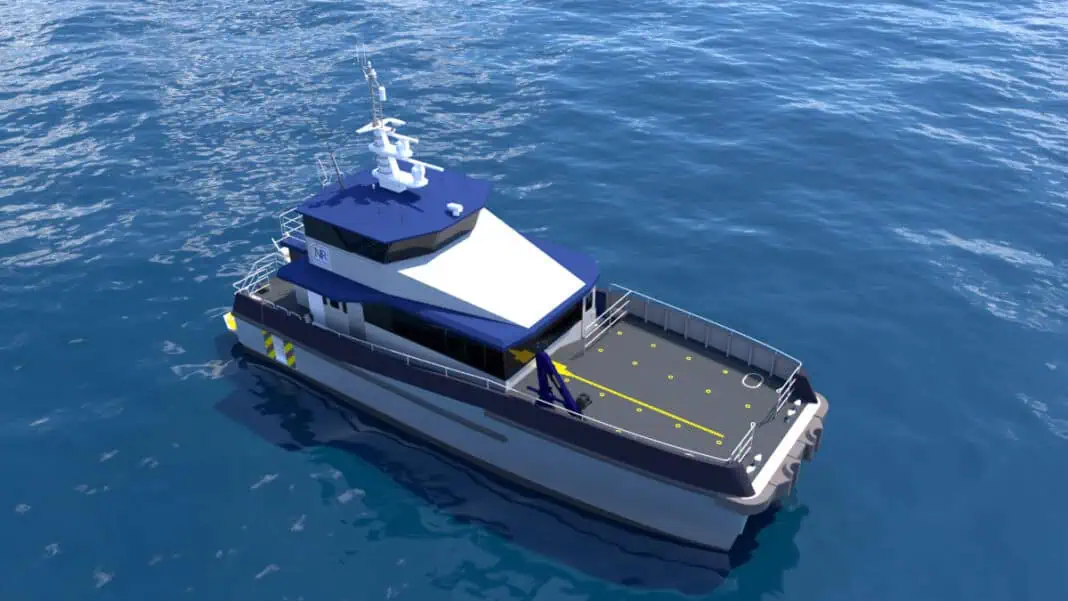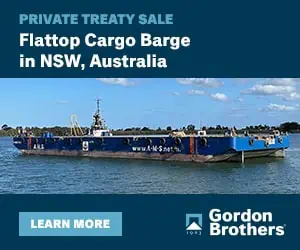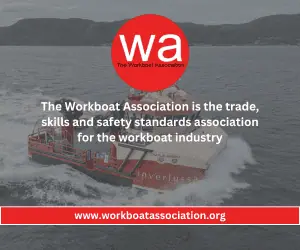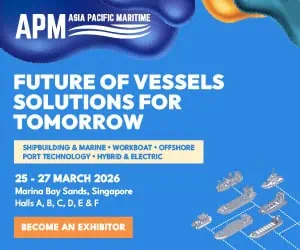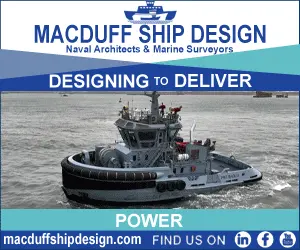NR Marine Services is proud to announce its collaboration with Chartwell Marine, a leading pioneer in next-generation vessel design, to design a new Crew Transfer Vessel (CTV) tailored to meet evolving industry demands.
With the offshore wind sector increasingly focusing on maintaining and servicing older-generation (“legacy”) wind turbines, NR Marine Services has responded to client requests for a modern, purpose-built vessel that combines advanced construction techniques with enhanced fuel efficiency and crew comfort.
It has been a generation since UK based Naval Architects and Shipyards designed a sub 22m, sub 60 tonne, sub 3m bow height crew transfer vessel. Chartwell Marine has developed the ‘Defiant Class”, a 20m CTV designed to Workboat Code Edition 3 with IMO Tier 3 compliance featuring a step free flush forward deck, resiliently mounted superstructure and modern furnishings and materials used in larger CTVs.
- This is a bold, DEFIANT step to do different, to create a new class of smaller CTV required for legacy turbines whilst not losing the core identity of modern UK designed, UK built and UK operated CTVs.
- DEFIANT in compliance, this new class of CTV will comply with Workboat Code Edition 3, IMO Tier 3 and the spirit and core fundamentals of HS_OSC – albeit in a more cost-effective approach.
- DEFIANT in pricing, it is essential the new class is cost effectiv in the modern market. UK quality but smartly sized to benefit from UK supply chain core strengths and therefore pricing.
- DEFIANT in reliability, working with supply chain to integrate a new, smaller Quad IPS IMO Tier 3 or Hamilton Waterjet propulsion solution with high power to weight ratio whilst maintaining simple, quality and reliable engineering.
- DEFIANT in change, accepting most legacy turbines have unique site requirements, the vessel retains flexibility to be tailored to different projects from a water jet propulsion system for shallow water sites and hybrid options where budgets allow to internal modularity to suit different racking and seating solutions.
Andy Page of Chartwell Marine Ltd. said: “It is always enjoyable bringing a new class of vessel to the market. What’s interesting in this case, is the vessel is based-on “legacy vessel” parameters but with modern up-to-date experienced thinking. With the Defiant Class, we are able to utilise our proven high efficiency, high seakeeping performance hull form, in a smaller, more dynamic cost-effective platform, appropriate for the legacy turbine projects the vessels are intended to support”.
Richard Thurlow of NR Marine Services Ltd. adds: “NR Marine Services is excited to be the first to bring the brand-new Chartwell DEFIANT Class CTV to the market. With strong industry focus being on the HSOSC market space, the CTV development has been taken away from the smaller vessel market. Working closely with Chartwell Marine and Diverse Marine we have looked at incorporating as many of the recent CTV developments a possible into a smaller package. Step free access from deck level to bow step over point, tiered seating, Male and Female heads, comprehensive galley suite and optimised hull design for near shore projects. Following an internal fleet review long with external market research, the data shows that there is a potential to replace older tonnage which is between 10-15 years old for near shore projects which have a lifespan that warrants investment in new CTV’s”.
Ben Colman of Diverse Marine Ltd. adds: “Many years ago, the UK proved that building large numbers of smaller CTV’s was possible but these times have been forgotten as the CTV industry as evolved into larger. HS-OSC compliant craft. It is both exciting and challenging to be involved a project to build a new smaller CTV that meets the growing demand for legacy turbine access with modern technological compliance, modern materials, high fuel efficiency, hybrid options. Put simply the Defiant hosts, a modern, clean and spacious environment but on a smaller highly efficient platform that suits the smaller harbours, short transit sites and shallow water projects.”



